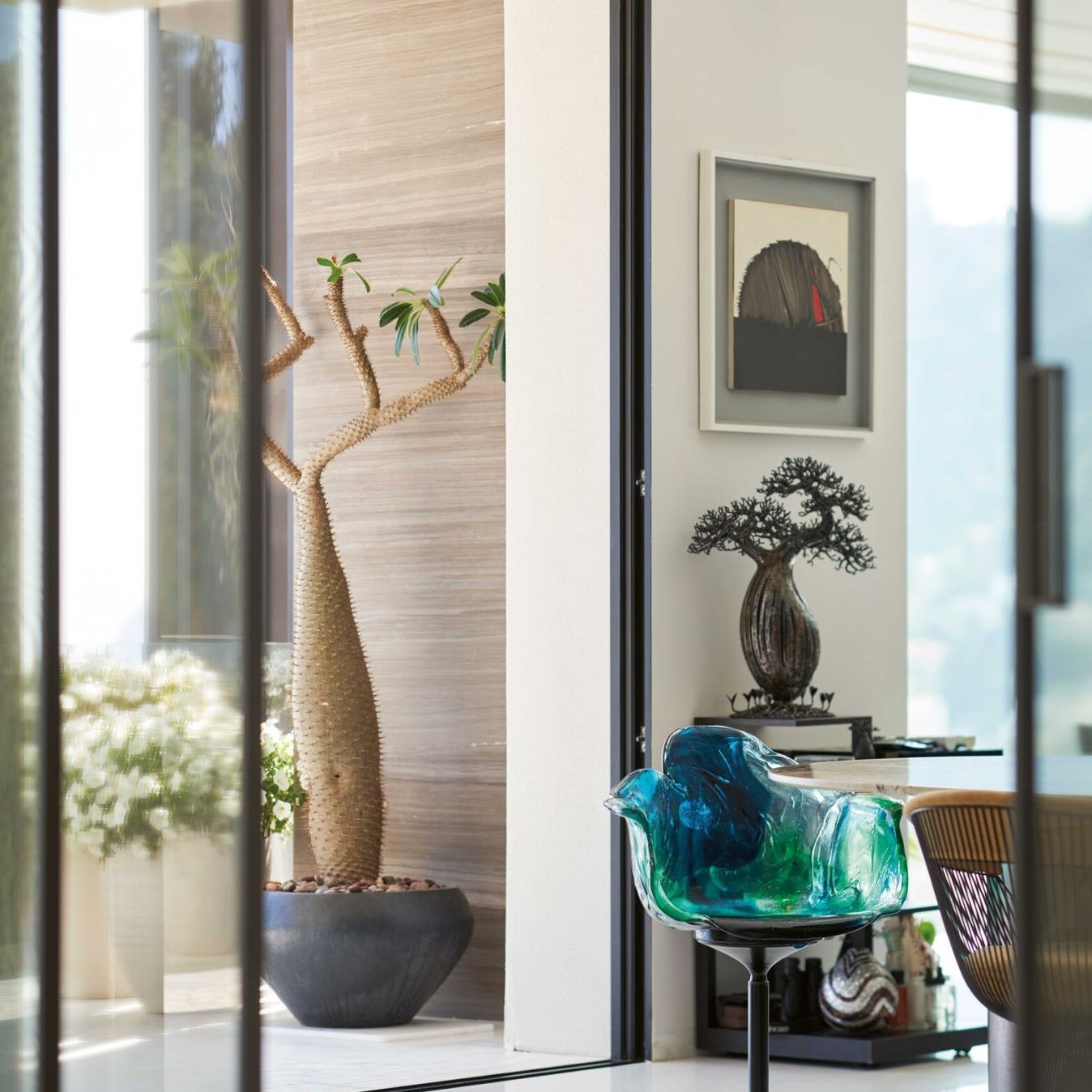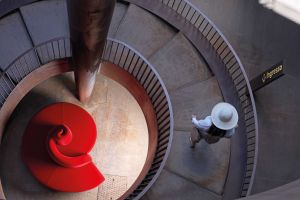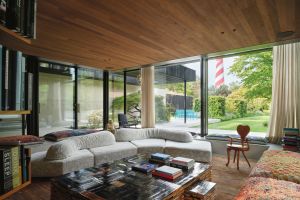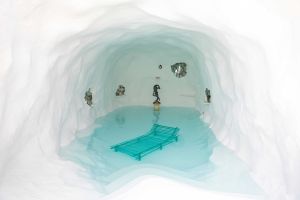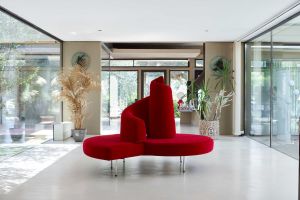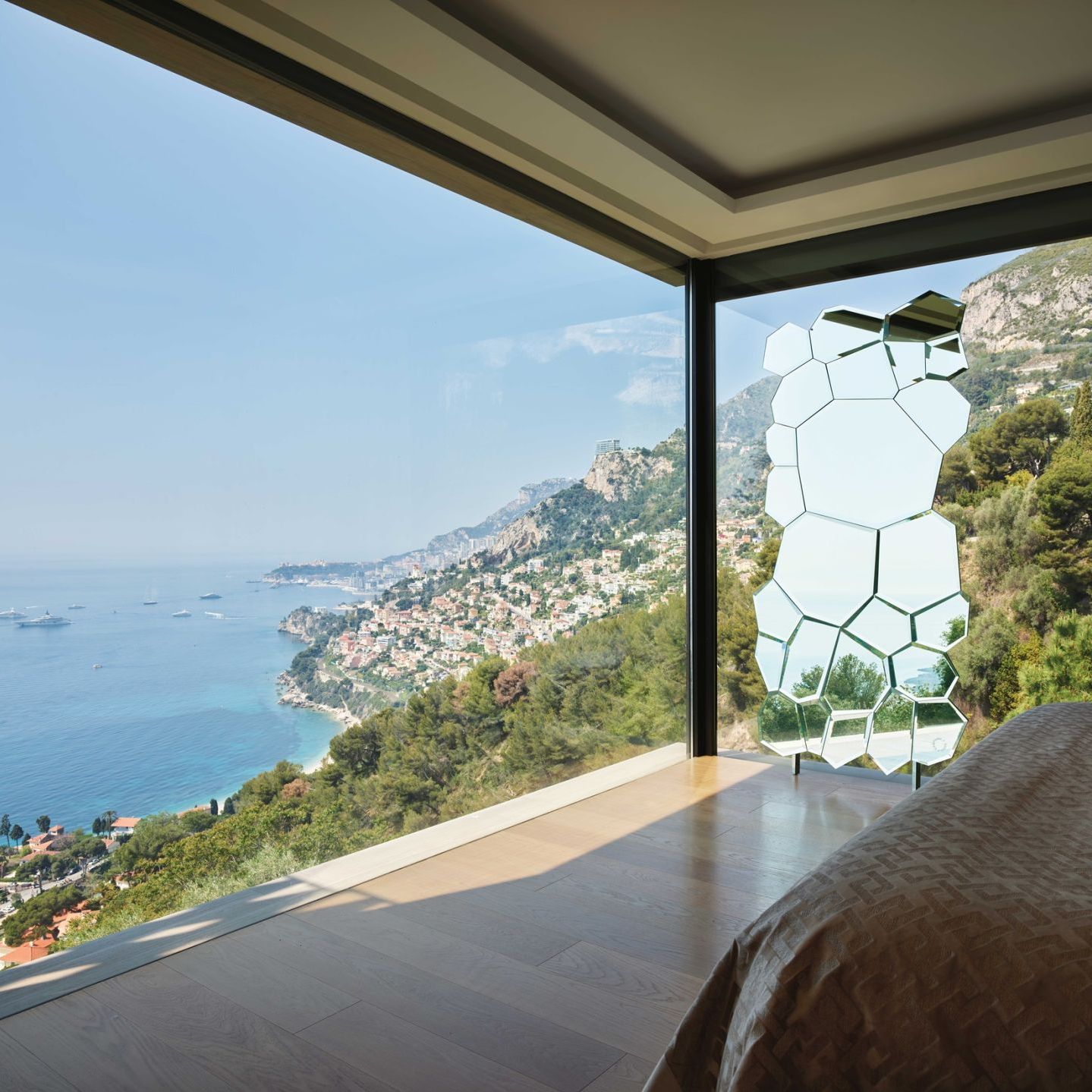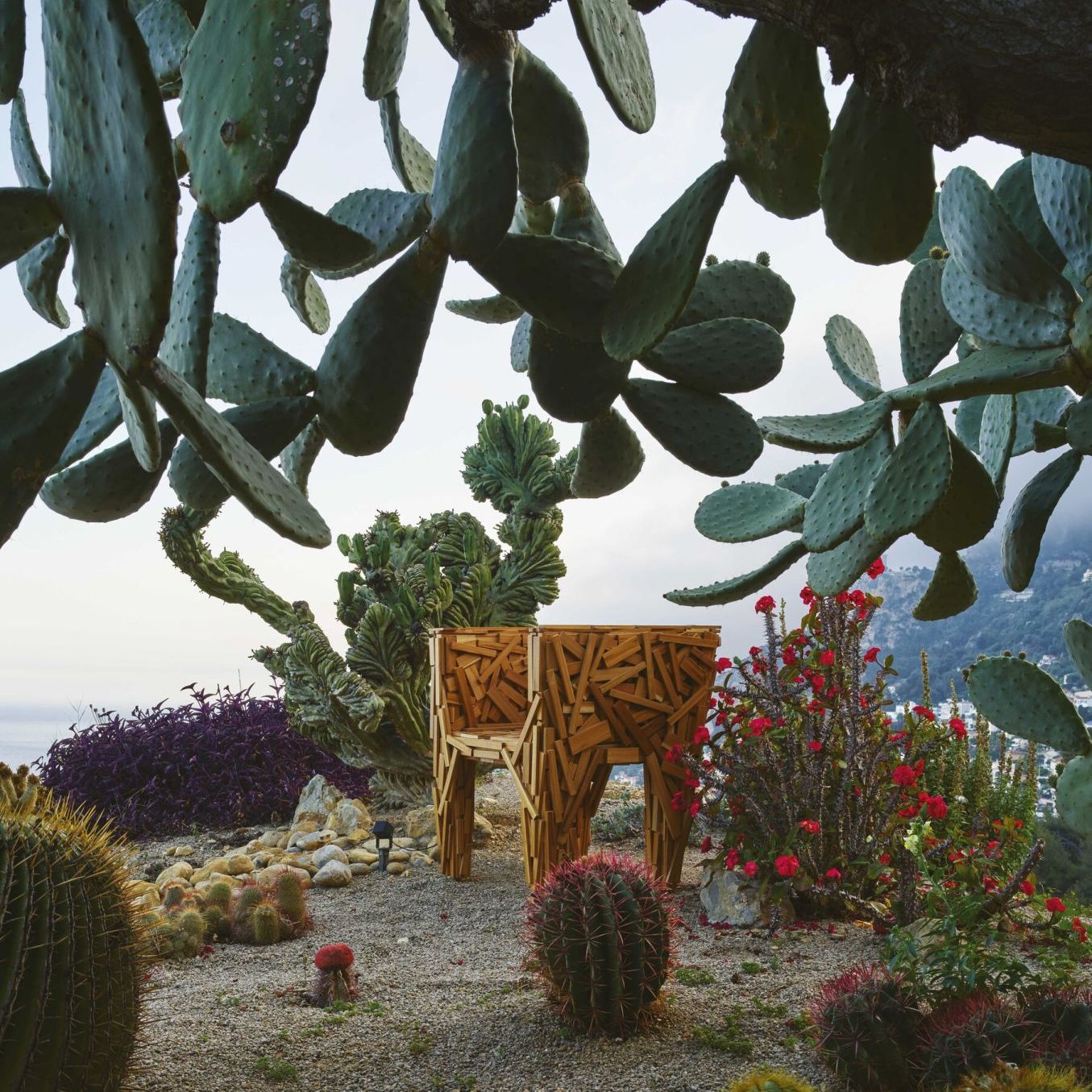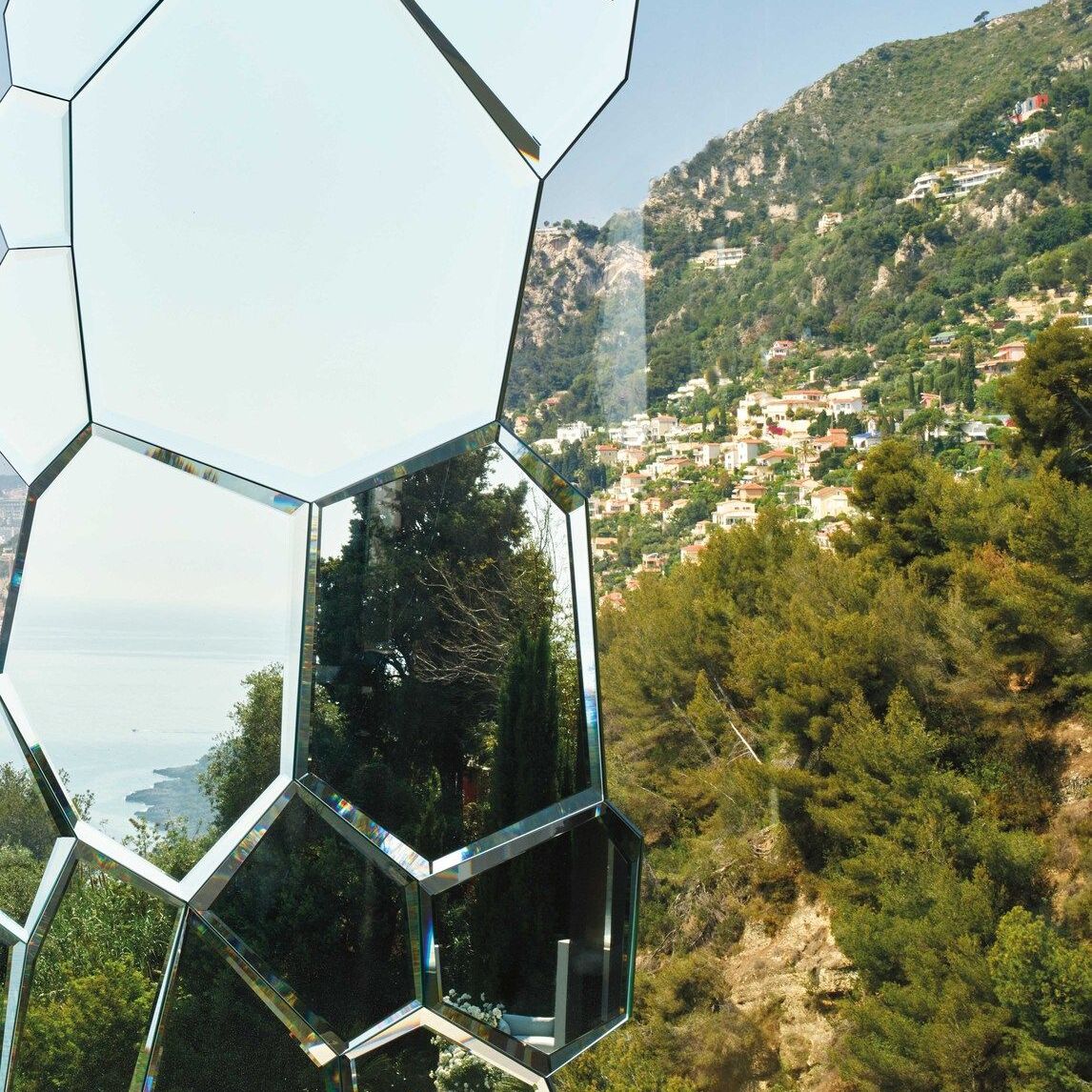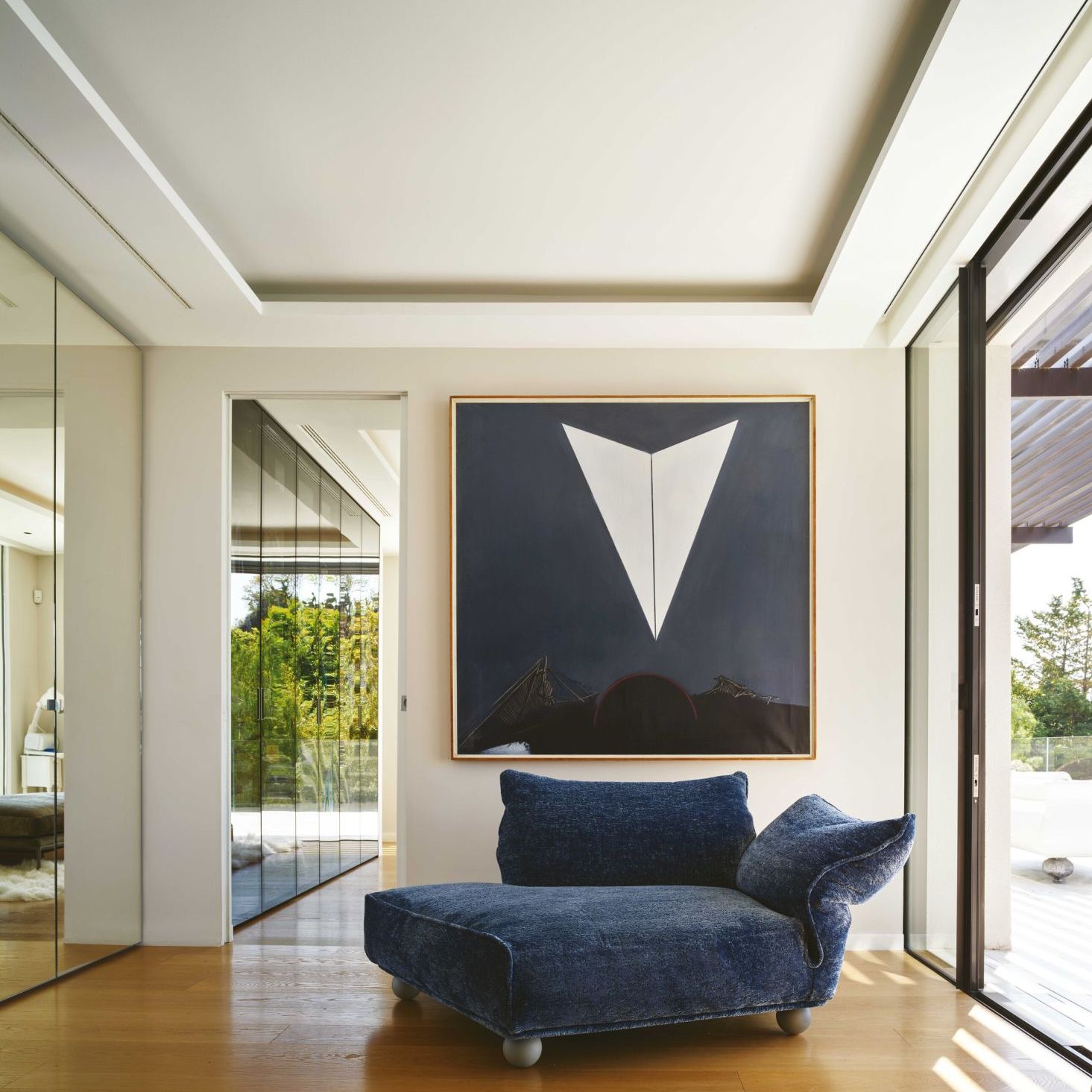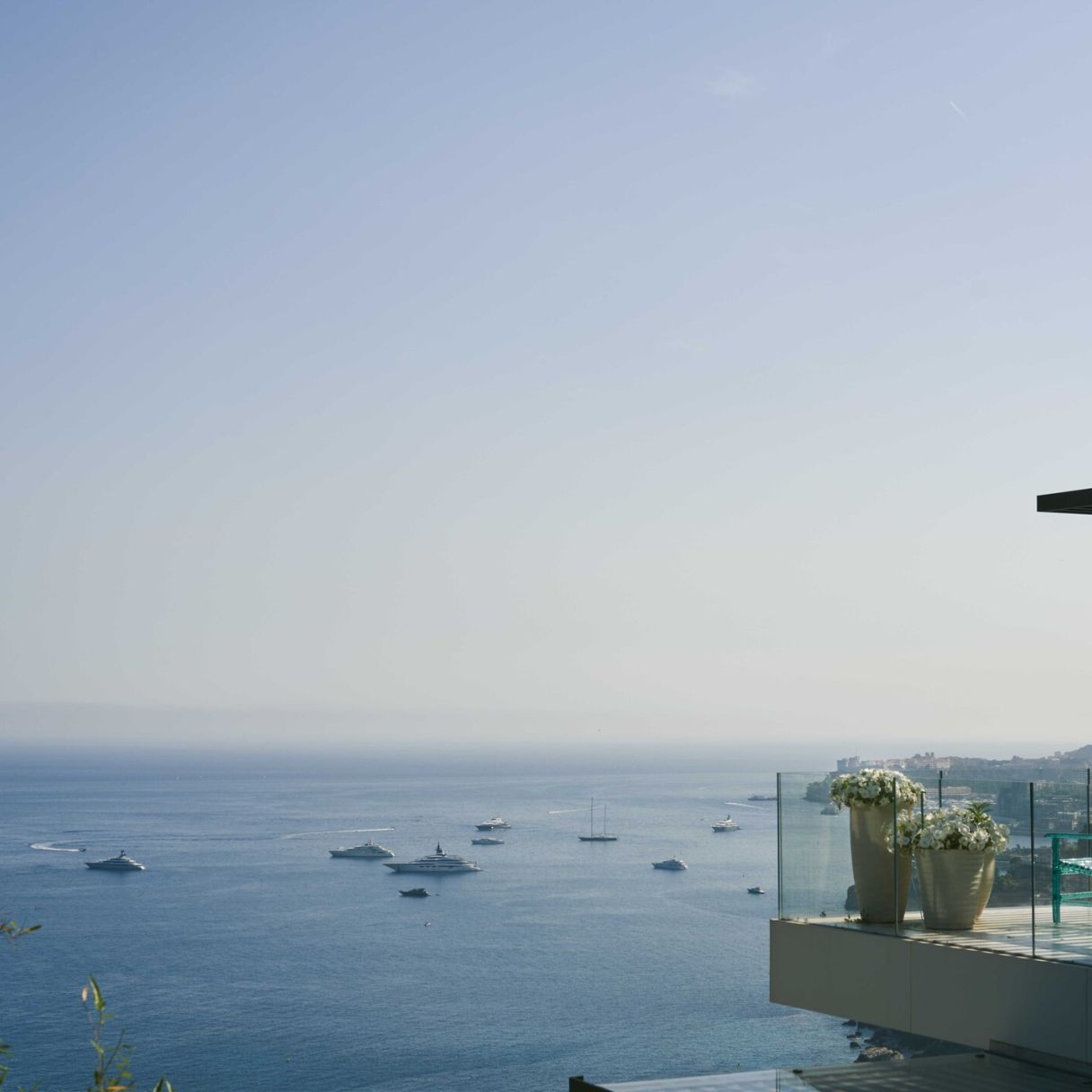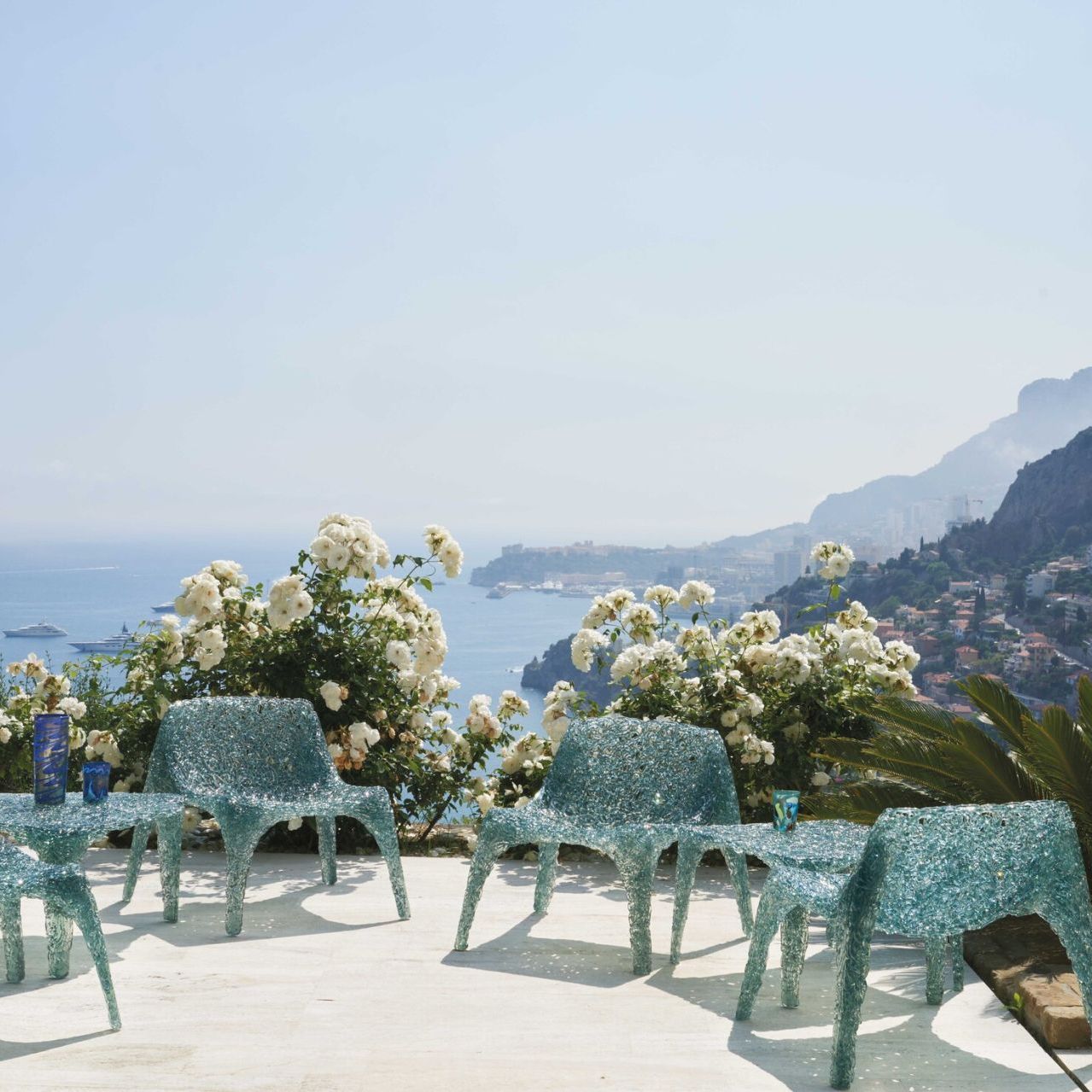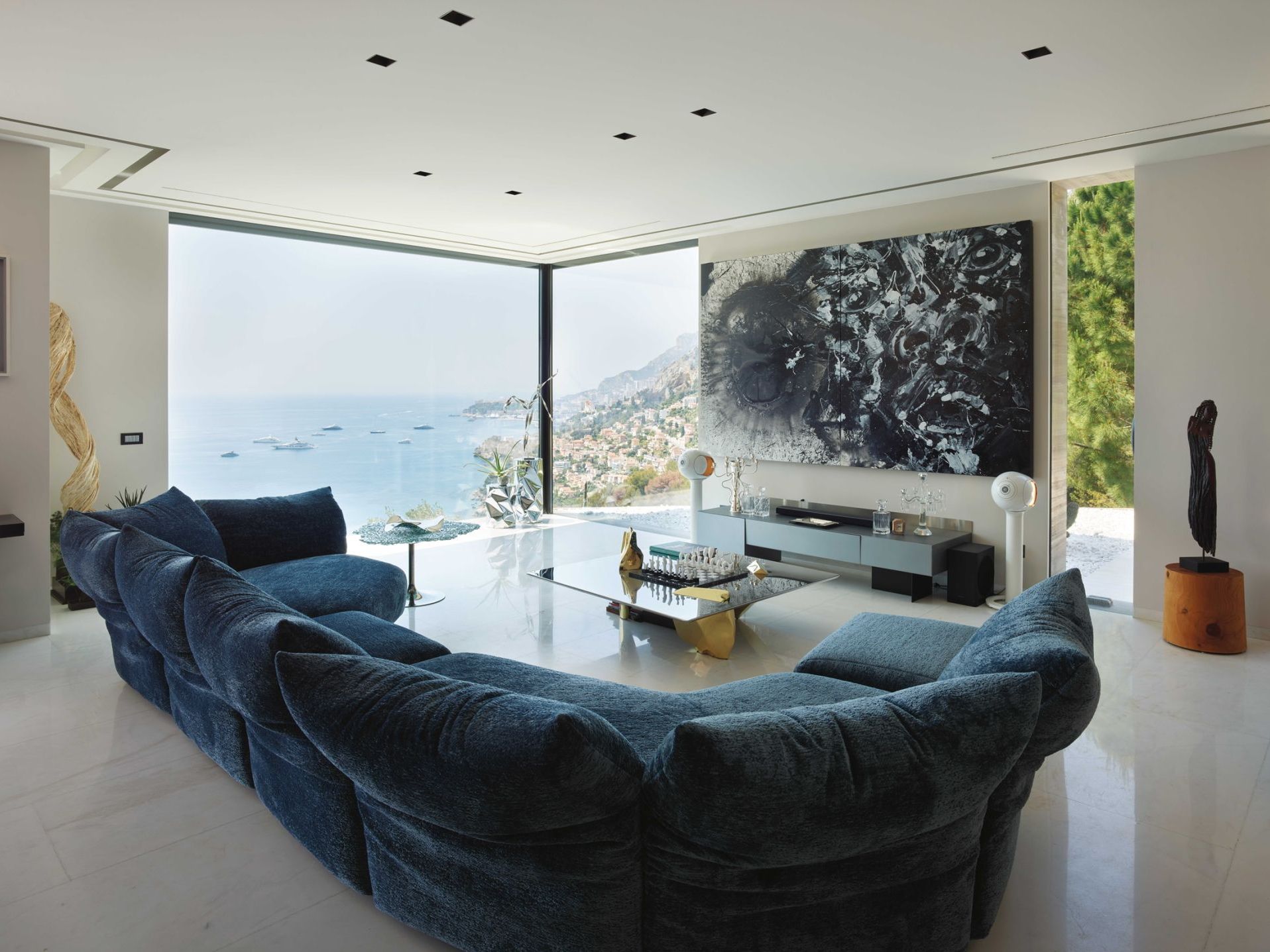
Standard ะฟัะธะณะปะฐัะฐะตั ั ะบะพะผัะพััะพะผ ะฝะฐัะปะฐะดะธัััั ะฒะพัั ะธัะธัะตะปัะฝัะผะธ ะฒะธะดะฐะผะธ ะฝะฐ ะฑัั ัั
ะพะบััะฑัั 2023
Silvia Botti
ะะธะปะปะฐ ะฝะฐ ะคัะฐะฝััะทัะบะพะน ะ ะธะฒัะตัะต
ะะฑะธะปะธะต ัะพะปะฝัะฐ, ัะฝะธะบะฐะปัะฝะฐั ะฟัะธัะพะดะฐ ะธ ะปะฐะฝะดัะฐัั ั ะฟะพััััะฐััะธะผะธ ะฒะธะดะฐะผะธ ะฝะฐ ะกัะตะดะธะทะตะผะฝะพะต ะผะพัะต
ะกััะตััะฒััั ัะฐะบะธะต ะถะธะฒะพะฟะธัะฝัะต ะผะตััะฐ, ะณะดะต ะผะฐะฝััะธะต ะฒะทะพั ะบัะฐัะบะธ ะฟัะธัะพะดั ะธ ะพะฑะธะปะธะต ัะฒะตัะฐ ะฟัะพะฑัะถะดะฐัั ะฒ ะฝะฐั ะถะตะปะฐะฝะธะต ัะผะฐะบะพะฒะฐัั ะธั ะฐัะพะผะฐัั, ะฒัะปััะธะฒะฐัััั ะฒ ะทะฒัะบะธ ะธ ะฒะฟะธััะฒะฐัั ะบะพะถะตะน ะฒะพะทะดัั ัะฐะบะธั ะผะตัั. ะขะฐะผ, ะณะดะต ะฝะฐัะธ ััะฒััะฒะฐ ััััะตะผะปััััั ะทะฐ ะฒะทะณะปัะดะพะผ ะธ ะพะบะพะฝัะฐัะตะปัะฝะพ ะฟะพะบะพัััััั ะตะผั. ะะฐะทััะฝัะน ะฑะตัะตะณ ะคัะฐะฝัะธะธ — ะพะดะฝะฐ ะธะท ัะฐะบะธั ะปะพะบะฐัะธะน, ัะตััะฐัะฐ ั ะฒะธะดะพะผ ะฝะฐ ะกัะตะดะธะทะตะผะฝะพะต ะผะพัะต ั ัะพะปะฝัะตะผ, ะฒะตััะฐะผะธ, ะผะพัะตะผ ะธ ะฝะตะฟะพะฒัะพัะธะผัะผะธ ะทะฐะฟะฐั ะฐะผะธ.
ะัะธัะฐะฝัะบะธะน ะฟะธัะฐัะตะปั ะฃะธะปััะผ ะกะพะผะตััะตั ะะพัะผ, ะบะพัะพััะน ะฟัะพะฒะตะป ะฝะตัะบะพะปัะบะพ ะปะตั ัะฒะพะตะน ะฟะพะปะฝะพะน ะฟัะธะบะปััะตะฝะธะน ะถะธะทะฝะธ ะฝะฐ ะฒะธะปะปะต La Mauresque ะฝะฐ ะะฐะฟ-ะคะตััะฐ, ะปัะฑะธะป ะพะฟะธััะฒะฐัั ัะฒะพะต ะฟัะตะฑัะฒะฐะฝะธะต ะฝะฐ ะ ะธะฒัะตัะต ัะฐะบ: «ะถะธะทะฝั ะฒ ััะธั ะผะตััะฐั ะฝะตะฒัะฝะพัะธะผะพ ะฟัะตะบัะฐัะฝะฐ, ััะพ ั ะฑัะป ะฒัะฝัะถะดะตะฝ ะทะฐะบะพะปะพัะธัั ะพะบะฝะพ ัะฒะพะตะน ัััะดะธะธ, ััะพะฑั ะธะผะตัั ะฒะพะทะผะพะถะฝะพััั ะฟัะพะดะพะปะถะฐัั ะฟะธัะฐัั». ะะพัะผ, ะบะพะฝะตัะฝะพ, ะบะฐะบ ะฟะธัะฐัะตะปั, ะฟัะตัะฒะตะปะธัะธะฒะฐะตั, ะฝะพ ะพะฝ ะดะตะนััะฒะธัะตะปัะฝะพ ัะฐะฑะพัะฐะป ะฒ ะบะพะผะฝะฐัะต ะฒัะพัะพะณะพ ััะฐะถะฐ ะทะฐ ะฟะธััะผะตะฝะฝัะผ ััะพะปะพะผ, ะฟัะตะดััะผะพััะธัะตะปัะฝะพ ัะฐัะฟะพะปะพะถะตะฝะฝัะผ ั ะฒะธะดะพะผ ะฝะฐ ะฟััััั ััะตะฝั, ัะฟะธะฝะพะน ะบ ะฑะพะปััะพะผั ะพะบะฝั, ะพัะบัะดะฐ ะพัะบััะฒะฐะปัั ะฝะตะฟะพะฒัะพัะธะผัะน ะฒะธะด ะฝะฐ ะกัะตะดะธะทะตะผะฝะพะต ะผะพัะต.
ะะผะตะฝะฝะพ ััะพั ะฒะธะด ะฝะฐ ะพะดะฝั ะธะท ัะฐะผัั ะบัะฐัะธะฒัั ะ ะธะฒัะตั ะผะธัะฐ ะทะฐะฒะปะฐะดะตะป ัะตัะดัะฐะผะธ ะฒะปะฐะดะตะปััะตะฒ ะฒะธะปะปั, ะบะพัะพัะฐั ะฑัะปะฐ ะทะฐะดัะผะฐะฝะฐ ะธ ัะฟัะพะตะบัะธัะพะฒะฐะฝะฐ, ััะพะฑั ะธะผะตัั ะฒะพะทะผะพะถะฝะพััั ะฒ ะฟะพะปะฝะพะน ะผะตัะต ะฝะฐัะปะฐะถะดะฐัััั ะฒะพัั ะธัะธัะตะปัะฝัะผะธ ะฒะธะดะฐะผะธ ะฟะพะฑะตัะตะถัั, ััะพะฟะฐั ะฒ ะตะณะพ ะฟะตะนะทะฐะถะฐั . ะะดะตัั, ะฒ ะพะบััะถะตะฝะธะธ ะฟััะฝะพะน ััะตะดะธะทะตะผะฝะพะผะพััะบะพะน ัะฐััะธัะตะปัะฝะพััะธ, ะฒ ัะตะฝะธ ะฒะตะปะธัะตััะฒะตะฝะฝัั ะณะพัะฝัั ัะบะปะพะฝะพะฒ, ััะพ ั ะฐัะฐะบัะตัะธะทััั ะปะฐะฝะดัะฐัั ะผััะฐ ะะฐะฟ-ะคะตััะฐ, ะฝะฐ ัะตััะธัะพัะธะธ ั ัะฐะดะพะผ 7500 ะผ2 ะฑัะป ัะฟัะพะตะบัะธัะพะฒะฐะฝ ะบะพะผะฟะปะตะบั ะธะท ะฒะธะปะปั, ะฒะฟะธัะฐะฝะฝะพะน ะฒ ัะบะฐะปั, ัะตัััะตั ะฝะตะฑะพะปััะธั ัััะพะตะฝะธะน ะธ ะดะพะผะธะบะฐ ั ะฑะฐััะตะนะฝะพะผ.
ะฃะฝะธะบะฐะปัะฝะพััั ััะพะณะพ ะฟัะพะตะบัะฐ ัะพััะพะธั ะฒ ัะปะพะถะฝัั ะฒะทะฐะธะผะพะพัะฝะพัะตะฝะธัั ั ะปะฐะฝะดัะฐััะพะผ, ะบะพัะพััะน ะฟะพะดัะธะฝะธะป ัะตะฑะต ะฐัั ะธัะตะบัััั, ะฒัะฑะพั ะผะฐัะตัะธะฐะปะพะฒ ะธ ัะฒะตัะพะฒ, ััะพะฑั ะณะฐัะฐะฝัะธัะพะฒะฐัั ะฟัะธะฒะฐัะฝะพััั ะพะฑะธัะฐัะตะปะตะน ะฝะฐััะดั ั ะพัะบัััะพัััั ะทะฐั ะฒะฐััะฒะฐััะธะผ ะฒะธะดะฐะผ.
ะั ะพะด ัะฐัะฟะพะปะพะถะตะฝ ะฒ ัะฐััะธ ัะฐะผะพะณะพ ะฒััะพะบะพะณะพ ััะฐะถะฐ ะฒะธะปะปั, ััะดะพะผ ั ะฑะพะปััะธะผ ะณะฐัะฐะถะพะผ, ะฟะฐะฝะพัะฐะผะฝัะผ ะปะธััะพะผ ะธ ะปะตััะฝะธัะตะน ะธะท ะผะฐัะพะฒะพะณะพ ะฐะปะตะฑะฐัััะพะฒะพะณะพ ััะฐะฒะตััะธะฝะฐ, ะฒะตะดััะตะน ะฒ ะฟัะพััะพัะฝัั ะถะธะปัั ะทะพะฝั ััะฐะถะพะผ ะฝะธะถะต. ะฃะถะต, ะฒะพัะฟะพะปัะทะพะฒะฐะฒัะธัั ะปะตััะฝะธัะตะน, ะผะพะถะฝะพ ะฝะฐัะปะฐะดะธัััั ะฒะตะปะธะบะพะปะตะฟะฝัะผ ะฒะธะดะพะผ ะธ ะฐัะพะผะฐัะฐะผะธ ัะฐะดะฐ, ะฝะพ ะธะผะตะฝะฝะพ ะฟะพะตะทะดะบะฐ ะฝะฐ ะปะธััะต ะดะฐะตั ะฝะฐะผ ะฟัะตะดััะฐะฒะปะตะฝะธะต ะพ ะฝะตะพะฑััะฝะพััะธ ััะพะณะพ ะฟัะพะตะบัะฐ. ะะธัั ัะฟััะบะฐะตััั ะฟะพ ัะพะฝะฝะตะปั, ะฒัััะฑะปะตะฝะฝะพะผั ะฒ ัะบะฐะปะต, ะพัะบััะฒะฐั ะฒะทะพัั ะฒะตะบะพะฒัะต ัะปะพะธ ัะฝะธะบะฐะปัะฝะพะน ะบะฐะผะตะฝะธััะพะน ะฟะพัะพะดั.
ะะฐััะธะผะพ ะะพะฝะธัะตะปะปะธ, ะฐัั ะธัะตะบัะพั ะฟัะพะตะบัะฐ, ัะฐััะบะฐะทัะฒะฐะตั, ััะพ «ะฒะธะปะปะฐ ะฑัะบะฒะฐะปัะฝะพ ะฒัะตะทะฐะฝะฐ ะฒ ัะบะฐะปั, ััะพ ะพะฟัะตะดะตะปะธะปะพ ะตะต ัะปะพะถะฝัั ัะพัะผั. ะก ะฟะพะผะพััั ะธะฝะถะตะฝะตัะพะฒ ะธ ะณะตะพะปะพะณะพะฒ ะผั ััะฐัะฐะปะธัั ัะผะตะฝััะธัั ะฝะฐะณััะทะบั ะฝะฐ ัะบะฐะปั, ะฐะดะฐะฟัะธััั ัะฐะทะผะตัั ะฟัะพัััะฐะฝััะฒะฐ, ะตะณะพ ััะพะฒะฝะตะน ะธ ัะพะตะดะธะฝัััะธั ะฟัะพั ะพะดะพะฒ». ะ ัะตะทัะปััะฐัะต ะผั ะธะผะตะตะผ ะผะฝะพะณะพััะพะฒะฝะตะฒัั ัะปะพะถะฝัั ะฐัั ะธัะตะบัััั ั ัะปะตะณะฐะฝัะฝะพะน ะธะณัะพะน ะฒััััะฟะพะฒ ะธ ะฟะพะปะพััะตะน ะธ ะฑะพะปััะธะผ ะบะพะปะธัะตััะฒะพ ะฟะตัะตั ะพะดะพะฒ ะผะตะถะดั ััะฐะถะฐะผะธ.
ะะพััะธะฝะฐั ะฒะธะปะปั ะฟะปะพัะฐะดัั 150 ะบะฒะฐะดัะฐัะฝัั ะผะตััะพะฒ ะธะผะตะตั ะฒัั ะพะด ะฝะฐ ะฑะพะปัััั ัะตััะฐัั, ะพะดะฝะฐ ััะพัะพะฝะฐ ะบะพัะพัะพะน ะฟัะธะผัะบะฐะตั ะบ ัะฐะดั. ะะท ะฟะฐะฝะพัะฐะผะฝัั ะพะบะพะฝ ะฒ ะฟะพะป ะพัะบััะฒะฐะตััั ะทะฐั ะฒะฐััะฒะฐััะธะน ะฒะธะด ะฝะฐ ะผะพัะต, ะฐ ะฝะตะฑะพะปััะพะน ัะฐะด ะฟะพะดัะตัะบะธะฒะฐะตั ะพัะตััะฐะฝะธั ัะบะฐะป. ะะตััะฝะธัะฐ ะธะท ะผัะฐะผะพัะฐ Arabesco Orobico ะธ ะปะธัั ัะพะตะดะธะฝััั ะณะพััะธะฝัั ั ะณะปะฐะฒะฝัะผ ััััะพะผ ะฝะฐ ะฒัะพัะพะผ ััะฐะถะต ะธ ะฑะฐััะตะนะฝะพะผ ะฝะฐ ะฝะธะถะฝะตะผ.
ะะพะฝะฐ ัะฟะฐะปัะฝะธ ะฝะฐ ะฒะตัั ะฝะตะผ ััะฐะถะต ะฟะปะพัะฐะดัั ะพะบะพะปะพ 150 ะบะฒะฐะดัะฐัะฝัั ะผะตััะพะฒ ัะพััะพะธั ะธะท ะฑะพะปััะพะน ัะฟะฐะปัะฝะธ, ะฟัะธะปะตะณะฐััะตะน ะบ ะฝะตะน ะณะพััะธะฝะพะน, ะบะฐะฑะธะฝะตัะฐ, ะดะฒัั ะณะฐัะดะตัะพะฑะฝัั ะธ ะดะฒัั ะฒะฐะฝะฝัั ะบะพะผะฝะฐั. ะะดะตัั ัะพะถะต ะฟะฐะฝะพัะฐะผะฝะพะต ัะณะปะพะฒะพะต ะพะบะฝะพ ั ะฒะธะดะพะผ ะฝะฐ ะผะพัะต, ะธ ัะฐะทะดะฒะธะถะฝะพะต ััะฐะฝััะทัะบะพะต ะพะบะฝะพ, ะฒะตะดััะตะต ะฝะฐ ัะตััะฐัั. ะกะฟัััะธะฒัะธัั ะฝะฐ ััะพะฒะตะฝั ะฑะฐััะตะนะฝะฐ, ะผั ะพะฑะฝะฐััะถะธะฒะฐะตะผ ะดะฒะต ะณะพััะตะฒัะต ัะฟะฐะปัะฝะธ ั ะพัะดะตะปัะฝะพะน ะฒะฐะฝะฝะพะน ะบะพะผะฝะฐัะพะน ะธ ะณะฐัะดะตัะพะฑะฝะพะน, ะทะพะฝั ะดะพะผะฐัะฝะตะณะพ ะบะธะฝะพัะตะฐััะฐ ั 80-ะดัะนะผะพะฒัะผ ัะตะปะตะฒะธะทะพัะพะผ ะธ ัะธััะตะผะพะน hi-fi, ะฐ ัะฐะบะถะต ะฟะพะปะฝะพัััั ะพะฑะพััะดะพะฒะฐะฝะฝัั ะทะพะฝั ัะฟะฐ ั ััะตะฝะฐะถะตัะฝัะผ ะทะฐะปะพะผ ะธ ะบะพะผะฝะฐัะพะน ะดะปั ะทะฐะฝััะธะน ะฟะธะปะฐัะตัะพะผ. ะัััะดะฐ ะผะพะถะฝะพ ะฟะพะฟะฐััั ะฒ ะดะพะผะธะบ ั ะฑะฐััะตะนะฝะฐ ั ะทะพะฝะพะน ะขะ, ะดะธะฒะฐะฝะพะผ On the Rocks ะธ ะผะพะฑะธะปัะฝะพะน ะบัั ะฝะตะน ั ะฑะพะปััะธะผะธ ัะฐะทะดะฒะธะถะฝัะผะธ ะพะบะฝะฐะผะธ, ะฒัั ะพะดััะธะผะธ ะฝะฐ ะฟะฐะฝะพัะฐะผะฝัะน ะฑะฐััะตะนะฝ. ะะณะพ ัะตะผะฝัะน ะพะฑะปะธัะพะฒะพัะฝัะน ะบะฐะผะตะฝั ะพััะตะฝะบะฐ ะผะพัั ะฝะฐ ะณะพัะธะทะพะฝัะต ัะพะทะดะฐะตั ะพัััะตะฝะธะต ะฑะตัะบัะฐะนะฝะพััะธ.
ะะธัั ะฝะฐ ััะพะน ะฒะธะปะปะต — ััะพ ะฝะฐัะปะฐะถะดะฐัััั ะตะต ะผะฝะพะณะพัะธัะปะตะฝะฝัะผะธ ะพัะบััััะผะธ ะฟัะพัััะฐะฝััะฒะฐะผะธ. ะก ะบัััะธ, ะฟะตัะตะดะตะปะฐะฝะฝะพะน ะฐัั ะธัะตะบัะพัะพะผ ะฒ ะทะพะฝั ะฟะฐัะธะพ ั ะดะธะฒะฐะฝะฐะผะธ ะธ ะบัะตัะปะฐะผะธ, ะพัะบััะฒะฐะตััั ัะฝะธะบะฐะปัะฝัะน ะฒะธะด ะฝะฐ ะทะฐะปะธะฒ ะธ ะปะตััะฝะธัั, ะฒัััะฑะปะตะฝะฝัั ะฒ ัะบะฐะปะต, ะบะพัะพัะฐั ะฒะตะดะตั ะฝะฐ ัะฐะผัั ะฒััะพะบัั ัะพัะบั ะฒะธะปะปั ั ัะตะบัะตัะฝัะผ ะฑะพัะฐะฝะธัะตัะบะธะผ ัะฐะดะพะผ ั ะตะณะพ ะฒะพัั ะธัะธัะตะปัะฝัะผะธ ะฐัะพะผะฐัะฐะผะธ ัะตะดะบะธั ัะฐััะตะฝะธะน. ะะธะดะพะฒะฐั ััะพะฟะธะฝะบะฐ ัะพะตะดะธะฝัะตั ัะฐะทะฝัะต ัะณะพะปะบะธ ะฑะพะปััะพะณะพ ัะฐะดะฐ, ะพั ะฟััะดะฐ ะดะพ ัะบะฐะปะธัััั ััะฐััะบะพะฒ, ะธ ะฒะตะดะตั ะบ ะฝะตะฑะพะปััะพะผั ะผะพััั, ะบะพัะพััะน ัะพะตะดะธะฝัะตั ะฟัะพัััะฐะฝััะฒะพ ั ะดะฒัะผั ะฝะตะฑะพะปััะธะผ ะณะพััะตะฒัะผะธ ะฒะธะปะปะฐะผ ั ัะพะฑััะฒะตะฝะฝัะผ ะผะฐะปะตะฝัะบะธะผ ะฑะฐััะตะนะฝะพะผ.
ะะฐ ัะฐะผะพะผ ะดะตะปะต ะฝะต ะพะฑัะทะฐัะตะปัะฝะพ ะฟะพะบะธะดะฐัั ะดะพะผ, ััะพะฑั ะฟะพััะฒััะฒะพะฒะฐัั ะฟะพะณััะถะตะฝะธะต ะฒ ะปะฐะฝะดัะฐัั. ะะพ ัะปะพะฒะฐะผ ะฐัั ะธัะตะบัะพัะฐ ะะฐััะธะผะพ ะะพะฝะธัะตะปะปะธ, «ะฟัะธ ะฒัะฑะพัะต ะผะฐัะตัะธะฐะปะพะฒ ะธ ะพัะดะตะปะบะธ, ะฐ ัะฐะบะถะต ะผะตะฑะตะปะธ, ะฒ ะบะฐะถะดะพะต ะฟัะพัััะฐะฝััะฒะพ, ะผั ะฒัะตะณะดะฐ ะดะตัะถะฐะปะธ ัะพะบัั ะฝะฐ ัะฒัะทะธ ั ะพะบััะถะฐััะตะน ะฟัะธัะพะดะพะน». ะะฐะฝะพัะฐะผะฝัะต ะพะบะฝะฐ ะฟัะตะดะปะฐะณะฐัั ะฝะต ัะพะปัะบะพ ะฒะธะด ะดะพ ะณะพัะธะทะพะฝัะฐ, ะฝะพ ะธ ัะพะทะดะฐัั ัะฐะบัั ัะฒะตัะพะฒัั ะฟะฐะปะธััั ะธ ัะธััะฝะบะธ, ััะพ ะฒัะตะณะดะฐ ะฝะฐะฟะพะผะธะฝะฐัั ะพ ัะฒัะทะธ ะฒะฝัััะตะฝะฝะตะณะพ ะธ ะฒะฝะตัะฝะตะณะพ ะฟัะพัััะฐะฝััะฒะฐ.
ะะพะปััะธะต ะดะธะฒะฐะฝั Standard ัะพะปะธัััั ะฒ ะณะพััะธะฝะพะน. ะ ะฐะทัะฐะฑะพัะฐะฝะฝัะต ะดะปั Edra ะคัะฐะฝัะตัะบะพ ะะธะฝัะฐัะต, ะปะธัะตะฝะฝัะต ะถะตััะบะพััะธ, ะพะฝะธ ัะฐัะฟะฐั ะฝัะปะธ ัะฒะพะธ ะพะฑัััะธั, ััะพะฑั ะดะฐัั ะฒะพะทะผะพะถะฝะพััั ะฝะฐัะปะฐะดะธัััั ะฒะตะปะธะบะพะปะตะฟะฝัะผ ะฒะธะดะพะผ ะฝะฐ ะทะฐะปะธะฒ ะธะท ัะฐะทะฝัั ะฟะพะปะพะถะตะฝะธะน ะธ ัะฐะบัััะพะฒ. ะะปั ะพะฑะธะฒะบะธ ะฑัะปะฐ ะฒัะฑัะฐะฝะฐ ัะบะฐะฝั ั ะฒะบัะฐะฟะปะตะฝะธัะผะธ ะฑะปะตัะบะฐ ัะฒะตัะฐ ะผะพััะบะพะน ะฒะพะปะฝั, ะบะพัะพัะฐั ะฟัะธ ะตััะตััะฒะตะฝะฝะพะผ ะพัะฒะตัะตะฝะธะธ ะฟะตัะตะปะธะฒะฐะตััั ัะฝะธะบะฐะปัะฝัะผะธ ะพััะตะฝะบะฐะผะธ ะธ ัะพะทะดะฐะตั ะฐัะผะพััะตัั ะะฐะทััะฝะพะณะพ ะฑะตัะตะณะฐ. ะะฐัะปะฐะถะดะฐัััั ะฒะธะดะฐะผะธ ะผะพะถะฝะพ ั ะผะฐะบัะธะผะฐะปัะฝัะผ ะบะพะผัะพััะพะผ ะฝะฐ ัะธะดะตะฝััั ัะฐะทะฝะพะน ะณะปัะฑะธะฝั ะธ ัะพัะผั, ะฒะตะดั ะฟัะธะดะฐัั ะถะตะปะฐะตะผัั ัะพัะผั ะธ ะธะทะผะตะฝะธัั ัะณะพะป ะฝะฐะบะปะพะฝะฐ ัะฟะธะฝะพะบ ะธ ะฟะพะดะปะพะบะพัะฝะธะบะพะฒ ะผะพะถะฝะพ ะพะดะฝะธะผ ะดะฒะธะถะตะฝะธะตะผ ััะบะธ.
ะัะพะดะพะปะถะฐัั ะปะธะฝะธั ัะฒะตัะฐ ะธ ะฟะตัะตะปะธะฒะพะฒ, ะบะฐะบ ะฒะฝัััะธ ะฒะธะปะปั, ัะฐะบ ะธ ัะฝะฐััะถะธ, ะฟัะตะดะผะตัั ะฐะฒัะพัััะฒะฐ ะฏะบะพะฟะพ ะคะพะดะถะธะฝะธ, ะธะทะณะพัะพะฒะปะตะฝะฝัะต ะธะท ะฟะพะปะธะบะฐัะฑะพะฝะฐัะฐ. ะัะตัะปะพ Ella ั ะตะณะพ ะธะทััะบะฐะฝะฝะพะน ะธะณัะพะน ะฟัะพะทัะฐัะฝะพััะธ ะดะพะฑะฐะฒะปัะตั ััะบะพััะธ ะพะฑะตะดะตะฝะฝะพะน ะทะพะฝะต ะธ ะบัั ะฝะต, ัะพะทะดะฐะตั ัะฒะตัะพะฒัะต ัะพัะตัะฐะฝะธั ั ะพะบััะถะฐััะธะผ ะปะฐะฝะดัะฐััะพะผ, ะบะพัะพััะผ ะผะพะถะฝะพ ะฝะฐัะปะฐะถะดะฐัััั ะบะฐะบ ะฟะฐะฝะพัะฐะผะพะน, ะฒัะฐัะฐััั, ัะธะดั ะฝะฐ ะพัะฝะพะฒะฐะฝะธะธ-ะฟัะตะดะตััะฐะปะต ะบัะตัะปะฐ. ะะปั ะพัะพัะผะปะตะฝะธั ะพัะบััััั ะฟัะพัััะฐะฝััะฒ ัะฐะบะถะต ะฑัะปะธ ะฒัะฑัะฐะฝั ะฟัะตะดะผะตัั ะธะท ัะฝะธะบะฐะปัะฝะพะน ะบะพะปะปะตะบัะธะธ A'Mare ะธ ะฒััะฐะถะฐัั ะธะดะตั ะฟัะตะพะฑัะฐะถะตะฝะธั ะฒะพะดั, ัะพะทะดะฐะฒะฐั ะผะฐะณะธัะตัะบะธะต ะฑะปะธะบะธ. ะ ะดะพะผะต, ะฒะฑะปะธะทะธ ะพะบะพะฝ ะณะปะฐะฒะฝะพะน ัะฟะฐะปัะฝะธ ัะดะฐัะฝะพ ัะฐัะฟะพะปะพะถะธะปะธ ัะฝะธะบะฐะปัะฝะพะต ะทะตัะบะฐะปะพ Jubilé, ัะพะทะดะฐะฝะฝะพะต ัััะดะธะตะน ะฑัะฐััะตะฒ ะะฐะผะฟะฐะฝะฐ ะดะปั Edra, ัะปะตะผะตะฝัั ะฝะตะฟัะฐะฒะธะปัะฝะพะน ัะพัะผั ะบะพัะพัะพะณะพ ัะฐะบะถะต ะพััะฐะถะฐัั ะฑะตัะบัะฐะนะฝะธะต ะผะพััะบะธะต ะฟัะพััะพัั.
ะัะตะฒะธะดะฝะพ, ััะพ ะฐะฒัะพัั ะฟัะพะตะบัะฐ ะฟัะพะฒะตะปะธ ะฝะตะผะฐะปะพ ะฒัะตะผะตะฝะธ, ะธััะปะตะดัั ะธ ะฟะพะดะฑะธัะฐั ัะฐะผัะต ะธะทััะบะฐะฝะฝัะต ะผะฐัะตัะธะฐะปั ะดะปั ะพัะดะตะปะบะธ ะฟะพะผะตัะตะฝะธะน ะธ ัะปะตะผะตะฝัะพะฒ ะฒะธะปะปั: ะฟัะพัะปะตะถะธะฒะฐะตััั ัะฒัะทั ะผะตะถะดั ะฒัะฑะพัะพะผ ะฒะธะดะพะฒ ะผัะฐะผะพัะฐ ะธ ััะฐะฒะตััะธะฝะฐ ะฒ ัะฐะทะฝัั ะพัะดะตะปะบะฐั ั ะพััะตะฝะบะฐะผะธ ะธ ััััะบัััะพะน ะพะบััะถะฐััะตะณะพ ะบะฐะผะตะฝะธััะพะณะพ ะปะฐะฝะดัะฐััะฐ, ัะธะฟะธัะฝะพะณะพ ะดะปั ัะตะณะธะพะฝะฐ.
 |
ะกะธะปัะฒะธั ะะพััะธ ะกะธะปัะฒะธั ะะพััะธ — ะฝะตะทะฐะฒะธัะธะผัะน ะถััะฝะฐะปะธัั. ะกัะฐะทั ะฟะพัะปะต ะพะบะพะฝัะฐะฝะธั ะฐัั ะธัะตะบัััะฝะพะณะพ ัะฐะบัะปััะตัะฐ ะะธะปะฐะฝัะบะพะณะพ ะฟะพะปะธัะตั ะฝะธัะตัะบะพะณะพ ะธะฝััะธัััะฐ ะฟะพัะฒััะธะปะฐ ัะตะฑั ะถััะฝะฐะปะธััะธะบะต. ะะพัะปะต ะดะพะปะณะพะณะพ ะฟะตัะธะพะดะฐ ัะฐะฑะพัั ะฒ ะถะตะฝัะบะธั ะถััะฝะฐะปะฐั ะพ ะผะพะดะต ะธ ะบัะฐัะพัะต, ะพะฝะฐ ะฒะตัะฝัะปะฐัั ะบ ัะฒะพะตะน ะฟัะตะถะฝะตะน ัะฟะตัะธะฐะปะธะทะฐัะธะธ ะธ ััะฐะปะฐ ัะฐะฑะพัะฐัั ะฒ ััะตัะต ะดะธะทะฐะนะฝะฐ ะธ ััะฑะฐะฝะธััะธะบะธ. ะฏะฒะปัะปะฐัั ะบััะฐัะพัะพะผ ะธััะปะตะดะพะฒะฐัะตะปััะบะธั ะฟัะพะตะบัะพะฒ ะดะปั ะะธะปะฐะฝัะบะพะณะพ ะฟะพะปะธัะตั ะฝะธัะตัะบะพะณะพ ะธะฝััะธัััะฐ. ะก 2014 ะฟะพ 2020 ะณะพะด ััะบะพะฒะพะดะธะปะฐ «Abitare», ะผะตะถะดัะฝะฐัะพะดะฝัะผ ะถััะฝะฐะปะพะผ ะฟะพ ะฐัั ะธัะตะบัััะต ะธ ะดะธะทะฐะนะฝั. ะัะตะทะธะดะตะฝั ะคะพะฝะดะฐ ะะถะพะฒะฐะฝะฝะธ ะะธะบะตะปัััะธ — ัะตะฝััะฐ ะธะทััะตะฝะธั ะณะพัะพะดัะบะพะณะพ ะฟะปะฐะฝะธัะพะฒะฐะฝะธั, ัะพะฒัะตะผะตะฝะฝะพะน ะฐัั ะธัะตะบัััั ะธ ัะพัะธะฐะปัะฝะพะน ััะตะดั ะพะฑะธัะฐะฝะธั. |

